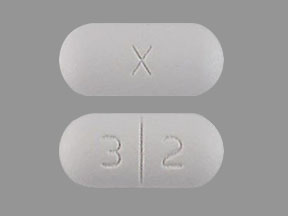
Amoxicillin-clavulanate Coupons & Savings Card – Discount Prices from $9.63
Generic for: Augmentin, Augmentin es-600
My prescription
Edit
875-125MG, Amoxicillin-clavulanate (20 Tablets)
Select pharmacy

CVS
$21.22
COUPON PRICE
Walmart
$9.63
COUPON PRICE
Walgreens
$14.64
COUPON PRICE
Albertsons
$18.76
COUPON PRICEAmoxicillin-clavulanate savings card
Show this card to your pharmacist
Walmart
$9.63
BIN
ID
PCN
GRP
019876
LH781A6645
CHIPPO
LHX
Powered by
More prescriptions for urinary tract infection
More prescriptions for urinary tract infection
Price history for Augmentin (brand) & Amoxicillin-clavulanate (generic)
20 Tablets, 875-125MG
Average retail price for Augmentin
Average retail price for Amoxicillin-clavulanate
Average SaveHealth price for Amoxicillin-clavulanate
Our price history data is based on aggregated prescription data collected from participating pharmacies in America. Our prescription data updates daily to reflect the latest price changes. If you notice a missing data point, it means there wasn't sufficient data available to generate a monetary value for that date.
We analyzed Amoxicillin-clavulanate prices for (875-125MG, 20 Tablets) over the last 12 months. The average retail price was $45.14, while the average price using the SaveHealth discount card was $23.64. That's a savings of approximately 47.63% when using our Amoxicillin-clavulanate coupon.
Compared to the generic version, Augmentin had an average price of $713.20 over the same time period. With the SaveHealth savings card, Amoxicillin-clavulanate is 96.69% cheaper on average than Augmentin.
*Retail prices are based on pharmacy claims data, and may not be accurate when we don't have enough claims.
Amoxicillin-clavulanate dosage forms
Dosage Quantity Price from Per unit 250-125MG 14 Tablets $27.84 $1.99 250-125MG 20 Tablets $34.56 $1.73 250-125MG 21 Tablets $35.39 $1.69 250-125MG 28 Tablets $41.18 $1.47 250-125MG 30 Tablets $42.84 $1.43 500-125MG 14 Tablets $7.04 $0.50 500-125MG 20 Tablets $8.98 $0.45 500-125MG 21 Tablets $9.31 $0.44 500-125MG 28 Tablets $11.58 $0.41 500-125MG 30 Tablets $12.22 $0.41
| Dosage | Quantity | Price from | Per unit |
|---|---|---|---|
| 250-125MG | 14 Tablets | $27.84 | $1.99 |
| 250-125MG | 20 Tablets | $34.56 | $1.73 |
| 250-125MG | 21 Tablets | $35.39 | $1.69 |
| 250-125MG | 28 Tablets | $41.18 | $1.47 |
| 250-125MG | 30 Tablets | $42.84 | $1.43 |
| 500-125MG | 14 Tablets | $7.04 | $0.50 |
| 500-125MG | 20 Tablets | $8.98 | $0.45 |
| 500-125MG | 21 Tablets | $9.31 | $0.44 |
| 500-125MG | 28 Tablets | $11.58 | $0.41 |
| 500-125MG | 30 Tablets | $12.22 | $0.41 |
| 875-125MG | 20 Tablets | $9.63 | $0.48 |
| 875-125MG | 6 Tablets | $4.64 | $0.77 |
| 875-125MG | 10 Tablets | $6.06 | $0.61 |
| 875-125MG | 14 Tablets | $7.49 | $0.54 |
| 875-125MG | 28 Tablets | $12.48 | $0.45 |
Amoxicillin-clavulanate Warnings
It's essential to be aware of the safety information and warnings associated with the use of Augmentin (amoxicillin/clavulanate). Below are key points to consider, which should be discussed with your healthcare provider if you have any concerns.
Allergic Reactions: There is a risk of severe allergic responses, including potentially life-threatening reactions like facial swelling and anaphylaxis. If you have a history of allergies to antibiotics, particularly penicillin, or are currently experiencing a mononucleosis infection, inform your healthcare team to assess your risk.
Liver Health: Rare cases of serious liver issues have been reported with Augmentin use. While these problems are usually reversible, they can be life-threatening. If you have a history of liver conditions, it's crucial to inform your healthcare provider, as monitoring through blood tests might be necessary.
C. difficile Infection: The use of Augmentin can increase the risk of infection by Clostridioides difficile, a bacterium that can cause severe diarrhea due to the alteration of normal gut bacteria by antibiotics.
Phenylketonuria (PKU) Caution: Chewable tablets and suspensions of Augmentin may contain phenylalanine, due to the presence of aspartame. This can be harmful if you have PKU, a genetic disorder, so ensure your healthcare provider is aware.
Contraindications: Do not use Augmentin if you have the following conditions, as it may cause significant health risks:
- A severe allergy to beta-lactam antibiotics, such as penicillin or cephalexin.
- A history of liver problems related to previous use of Augmentin.
Always consult your healthcare provider for personalized advice and guidance regarding medication use and potential risks.
Amoxicillin-clavulanate Side Effects
Common side effects:
- diarrhea
- nausea
- skin rash
Less common but important to monitor:
- persistent nausea or vomiting
- loss of appetite
- stomach pain
- yellowing of the eyes or skin
- dark urine
- unusual tiredness
- easy bruising or bleeding
- oral thrush
- new yeast infection
- white patches in the mouth
- changes in vaginal discharge
- persistent fever
- lymph node swelling
- rash
- severe dizziness
- difficulty breathing
Serious side effects:
- rare but serious intestinal condition caused by C. difficile
- severe diarrhea
- abdominal cramping
- blood in the stool
Amoxicillin-clavulanate Interactions
Interactions with high risk of serious adverse effects and should be avoided:
Interactions with moderate risk that may require dose adjustment, closer monitoring, or timing changes:
- Chlortetracycline
- Cholera Vaccine, Live
- Desogestrel
- Dienogest
- Doxycycline
- Drospirenone
- Eravacycline
- Estradiol
- Ethinyl Estradiol
- Ethynodiol
- Gestodene
- Levonorgestrel
- Lymecycline
- Meclocycline
- Mestranol
- Methacycline
- Minocycline
- Mycophenolate Mofetil
- Nomegestrol
- Norethindrone
- Norgestimate
- Norgestrel
- Omadacycline
- Oxytetracycline
- Rolitetracycline
- Sarecycline
- Sulfasalazine
- Tetracycline
- Tigecycline
- Venlafaxine
- Warfarin
Interactions with low risk that usually do not require a change in therapy:
- Acenocoumarol
- Khat
- Probenecid
